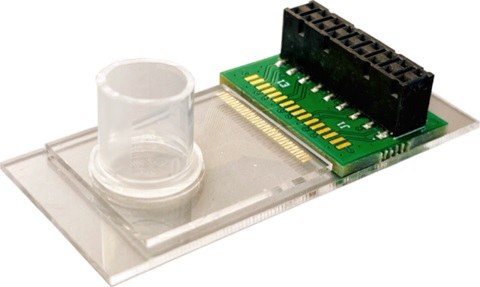Breakthrough Device That Detects DNA with 100-Fold Greater Sensitivity to Speed Disease Detection
Posted on 05 Oct 2023
Traditional DNA detection methods are like searching for a needle in a haystack, given that there are many other molecules in a sample that are not the target DNA and can interfere with the result. Now, a new method for DNA detection offers 100-fold greater sensitivity than traditional methods, paving the way for faster disease detection at the point of care.
In the new DNA detection method developed by researchers at the University of Massachusetts Amherst (Amherst, MA, USA), the test sample is placed within an alternating electric field, allowing the DNA strands to "dance." Each strand moves with its own unique frequency of oscillation. Researchers can then examine the sample to find a molecule that moves just like the DNA they're looking for, making it easy to identify even when present in extremely low concentrations.

The implications for this groundbreaking method are enormous, particularly for early diagnosis of diseases. Because of its high sensitivity, the test can identify diseases much sooner in their progression, which can be critical for treatment. Moreover, the electric-based method yields results in minutes rather than days, weeks, or months, making it ideal for point-of-care settings. Additionally, the technology is highly portable, resembling the size of a blood sugar monitoring device, which has the potential to make a substantial impact on global health.
“Everyone wants to detect the DNA at a low concentration with a high sensitivity. And we just developed this method to improve the sensitivity by about 100 times with no cost,” said Jinglei Ping, lead author of the paper that appeared in Proceedings of the National Academy of Sciences. “The nano-mechanoelectrical approach can be also integrated with other bioengineering technologies, like CRISPR, to elucidate nucleic acid signaling pathways, comprehend disease mechanisms, identify novel drug targets and create personalized treatment strategies, including microRNA-targeted therapies.”
Related Links:
UMass Amherst














